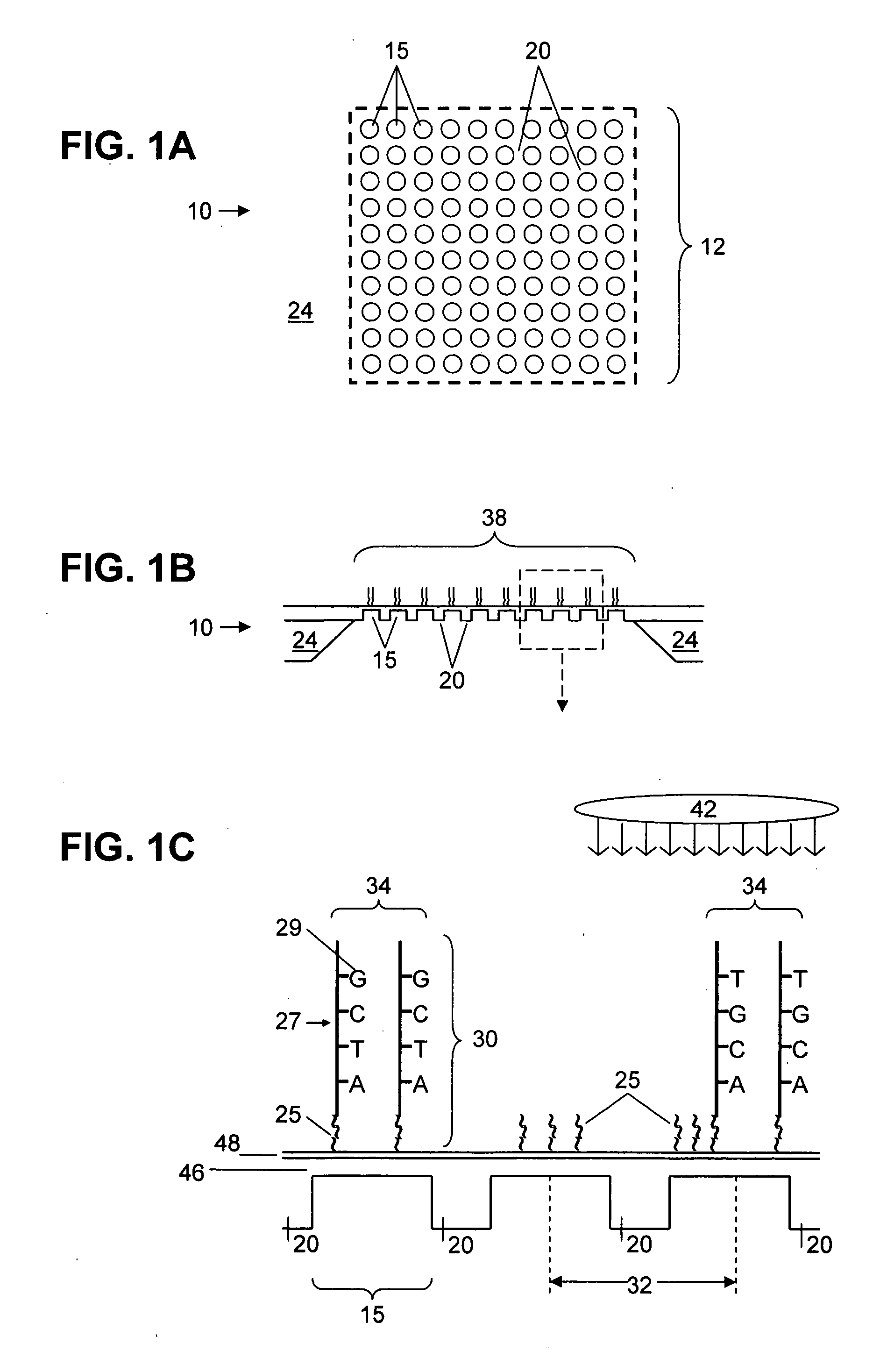Nano-scale ligand arrays on substrates for particle beam instruments and related methods
- Summary
- Abstract
- Description
- Claims
- Application Information
AI Technical Summary
Benefits of technology
Problems solved by technology
Method used
Image
Examples
Embodiment Construction
[0044] One aspect of the invention provides a substrate having a combination of materials and dimensions that allows the substrate to have distinct physical properties. Specifically, in one embodiment, the materials and dimensions of the substrate allow it to be used for imaging samples with a particle beam instrument such as a transmission electron microscope. The substrate can include one or more ligands (e.g., nucleic acids, polypeptides, oligosaccharides, and synthetic polymers) which may form an array. Corresponding changes in labeling chemistry can allow for ligands, binding partners and other relevant materials to be identifiable, quantitatable, and even sequenceable via modified forms of electron microscopy. In certain embodiments, the array dimensions are on the order of nanometers per functional region rather than micrometers as in certain conventional arrays. With these dimensions, smaller amounts of sample material can be used and more accurate genetic analyses performed...
PUM
| Property | Measurement | Unit |
|---|---|---|
| Length | aaaaa | aaaaa |
| Thickness | aaaaa | aaaaa |
| Thickness | aaaaa | aaaaa |
Abstract
Description
Claims
Application Information
 Login to View More
Login to View More - R&D
- Intellectual Property
- Life Sciences
- Materials
- Tech Scout
- Unparalleled Data Quality
- Higher Quality Content
- 60% Fewer Hallucinations
Browse by: Latest US Patents, China's latest patents, Technical Efficacy Thesaurus, Application Domain, Technology Topic, Popular Technical Reports.
© 2025 PatSnap. All rights reserved.Legal|Privacy policy|Modern Slavery Act Transparency Statement|Sitemap|About US| Contact US: help@patsnap.com



